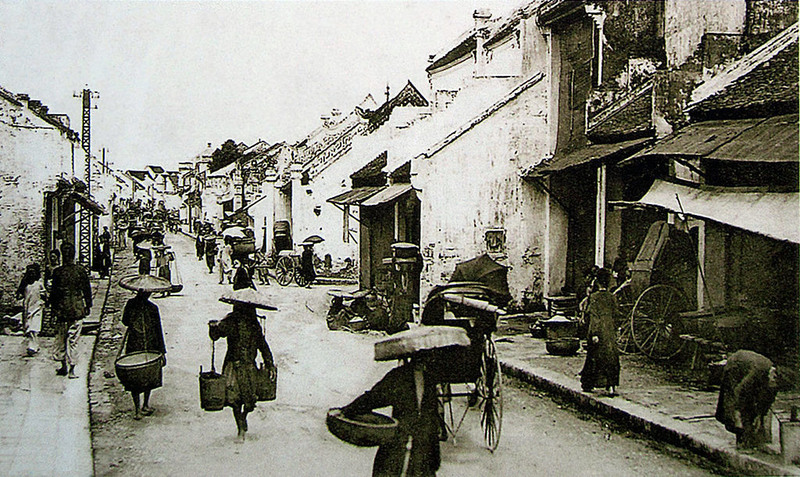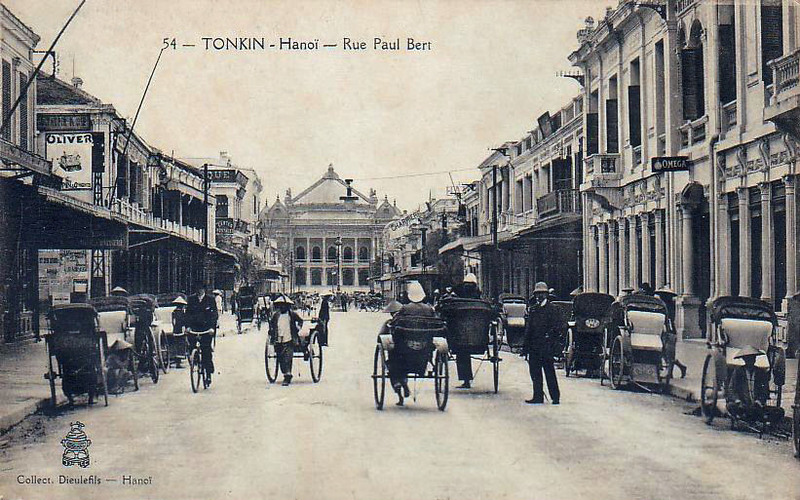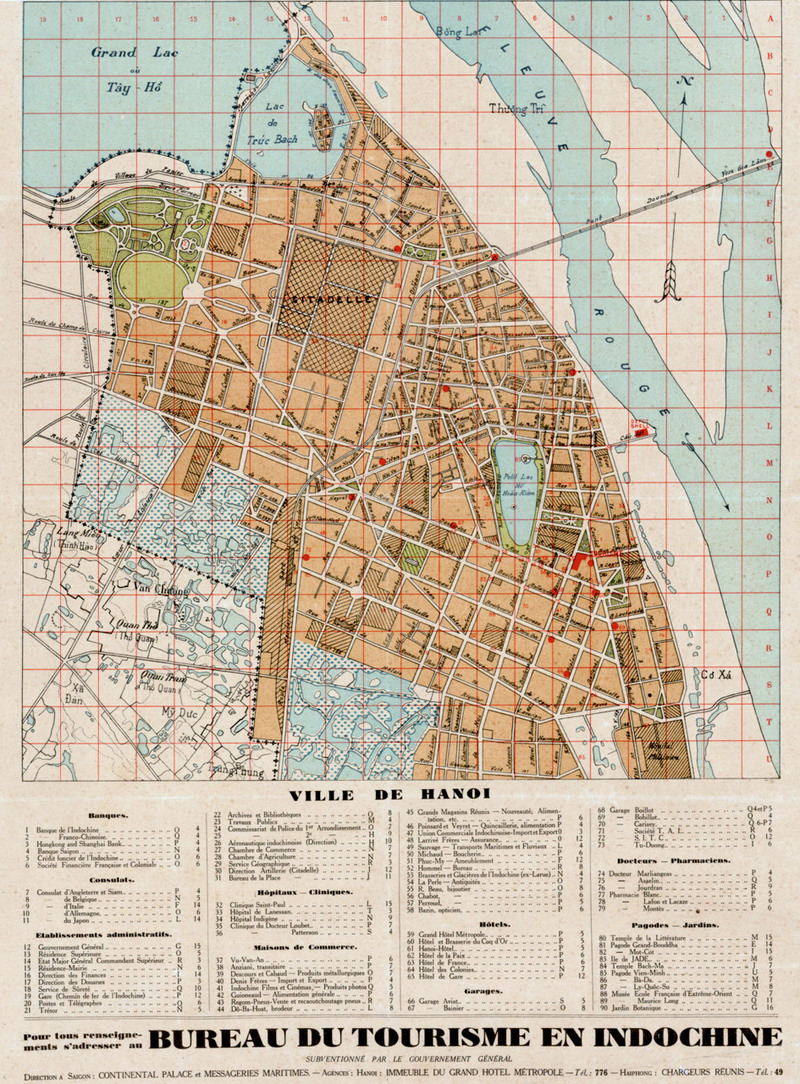
 A classic photograph of Rue Paul Bert (now Trang Tien Street), Hanoi. Public Domain
A classic photograph of Rue Paul Bert (now Trang Tien Street), Hanoi. Public Domain
In 1897, Paul Doumer showed up in Hanoi, Vietnam. A 40-something French government worker fresh off a large professional failure—he resigned as minister of finance after his plan for any new tax failed—Doumer were built with a job to test his hands at. He’d been hired the Governor-General of French Indochina, several colonies in Southeast Asia that incorporated what’s now Vietnam.
Doumer go about outfitting Indochina—and especially Hanoi, the capital—with modern infrastructure suitable for property of France. Through the turn from the century, an average colonist in Hanoi resided on the wide avenue lined with trees. Home would be a spacious rental property with lots of rooms and fine European things—including, particularly, a rest room.
 Paul Doumer, Governor-General of French Indochina from 1897 to 1902. Library of Congress/LC-DIG-ggbain-15756
Paul Doumer, Governor-General of French Indochina from 1897 to 1902. Library of Congress/LC-DIG-ggbain-15756
Ah, the bathroom .. Believe to differentiate French Hanoi, Doumer thought. The vast sewer system that ran underneath the French portion of town—and the smaller sized one serving the overcrowded neighborhoods in which the Vietnamese occupants lived—was symbolic of cleanliness and progress.
Think of the dismay, then, when rats started emerging in the drains.
Apparently , when Doumer’s colonial government laid greater than nine miles of sewage pipe beneath Hanoi, it unintentionally produced nine miles of awesome, dark rodent paradise, in which the unwanted pests could breed without anxiety about predators. So when they were given hungry, the rats had direct accessibility city’s ritziest property using a undercover superhighway. Underneath the roads of French Hanoi, rats multiplied exponentially—and then skittered towards the surface.
 A roadmap of Hanoi, 1925. Public Domain
A roadmap of Hanoi, 1925. Public Domain
As though it was not enough these furry invaders disrupted the colonists’ illusion of European tranquility in Asia, installments of the bubonic plague began appearing, and rats were suspected of transporting the condition. Something was needed.
An answer was devised. Vietnamese rat hunters, hired through the colonial government, would descend in to the sewers to search the rats lower, and become compensated for every one eliminated.
And thus started The Truly Amazing Hanoi Rat Massacre.
 A Hanoi sewer map, 1939. Courtesy Michael Vann
A Hanoi sewer map, 1939. Courtesy Michael Vann
Rat hunting wasn’t easy. Here’s a free account from Vann’s paper around the rat massacre:
“One needed to go into the dark and cramped sewer system, make one’s way through human waste in a variety of types of decay, and search lower a comparatively fierce wild animal that could be transporting fleas using the bubonic plague or any other contagious illnesses. This isn’t even going to mention the probable information on numerous other harmful creatures, for example snakes, spiders, along with other creatures, which make this author’s skin crawl with anxiety.”
Eventually, the settlers recognized that, despite this small army of compensated rat killers, these were failing to create a dent within the rat population.
They began to organize B, offering any enterprising civilian the chance to obtain the search. A bounty was set—one cent per rat—and whatever you needed to do in order to claim it had been submit a rat’s tail towards the municipal offices. This way, the federal government wouldn’t be overrun with bulky rat corpses. “I always consider that,” Dr. Vann states. “Who may be the poor guy counting each one of these rat tails?”
In France They were especially happy with this arrangement because they’d been encouraging entrepreneurialism in Vietnam. And initially, it appeared to become working. Tails put in. French resourcefulness triumphed again.
 Hanoi Town Hall, early twentieth century. Public Domain
Hanoi Town Hall, early twentieth century. Public Domain
However there began to become curious sightings, throughout town: Rats, alive and healthy, playing around without their tails.
It switched the hunters would prefer to amputate an active animal’s tail than have a healthy rat, able to breeding and creating so much more rats—with individuals valuable tails—out of commission. There have been also reports that some Vietnamese were smuggling foreign rats in to the city. And so the final straw: Health inspectors discovered, within the countryside around the borders of Hanoi, pop-up farming operations focused on breeding rats.
Apparently it was not exactly what the French meant by entrepreneurialism. The bounty was scrapped, and also the city’s residents resigned themselves to coexisting using the unwanted pests.
In France They were right about one factor, though: Individuals rats really were transporting bubonic plague. In 1906, with rats left to multiply within the sewers unchecked, there is an episode in Hanoi. A minimum of 263 people died, many of them Vietnamese. Doumer, meanwhile, went the place to find France, where he was celebrated as the very best Governor-General of Indochina up to now. He continued to get president.
 Hang Mam Street, Hanoi, early twentieth century. Public Domain
Hang Mam Street, Hanoi, early twentieth century. Public Domain
“It’s kind of a morality tale for that arrogance of modernity, that people put a lot belief into science and reason and taking advantage of industry to resolve every problem,” Vann states. “This is the standard mindset that cause World War I—the concept that the device gun, since it kills so efficiently, will result in a quick war. And just what that really result in is really a lengthy war where lots of people died.Inches
Nowadays, the truly amazing Hanoi Rat Massacre is mainly reported to illustrate the “Cobra Effect,” a fiscal theory about how exactly incentives, inside a complex system, can result in perverse, unintended effects. Sometimes, it’s trotted out as argument against government intervention associated with a kind—but Vann states that that sort of misses the purpose.
What exactly does he think the lesson is rather? “To look out for programs being produced in situations where in which the arrogance is really strong and also the power differential is really intense that evidence could be overlooked.”
In 1997, Vann visited Vietnam to complete archival research around the rat massacre. Eventually, he arrived at in to the top drawer of the card catalogue focused on pre-1954 French-language files, and felt a rat scurry over his hands. Lengthy following the French packed up and left Vietnam, the rats remain.
Resourse: http://atlasobscura.com/articles/
“>
